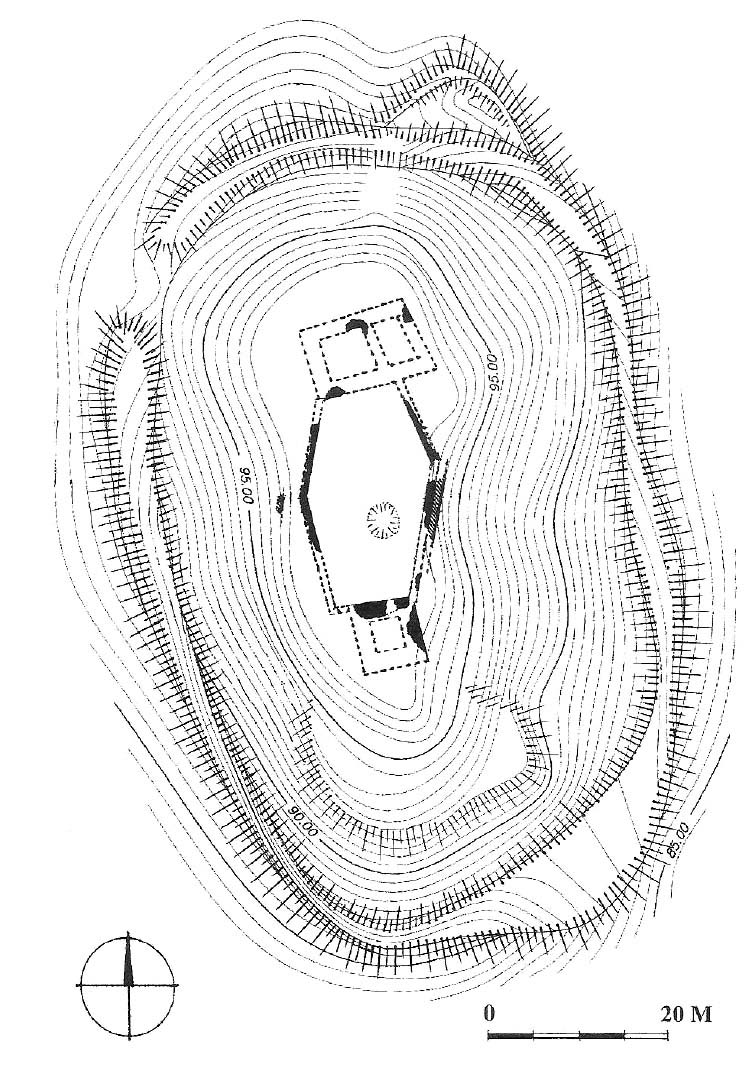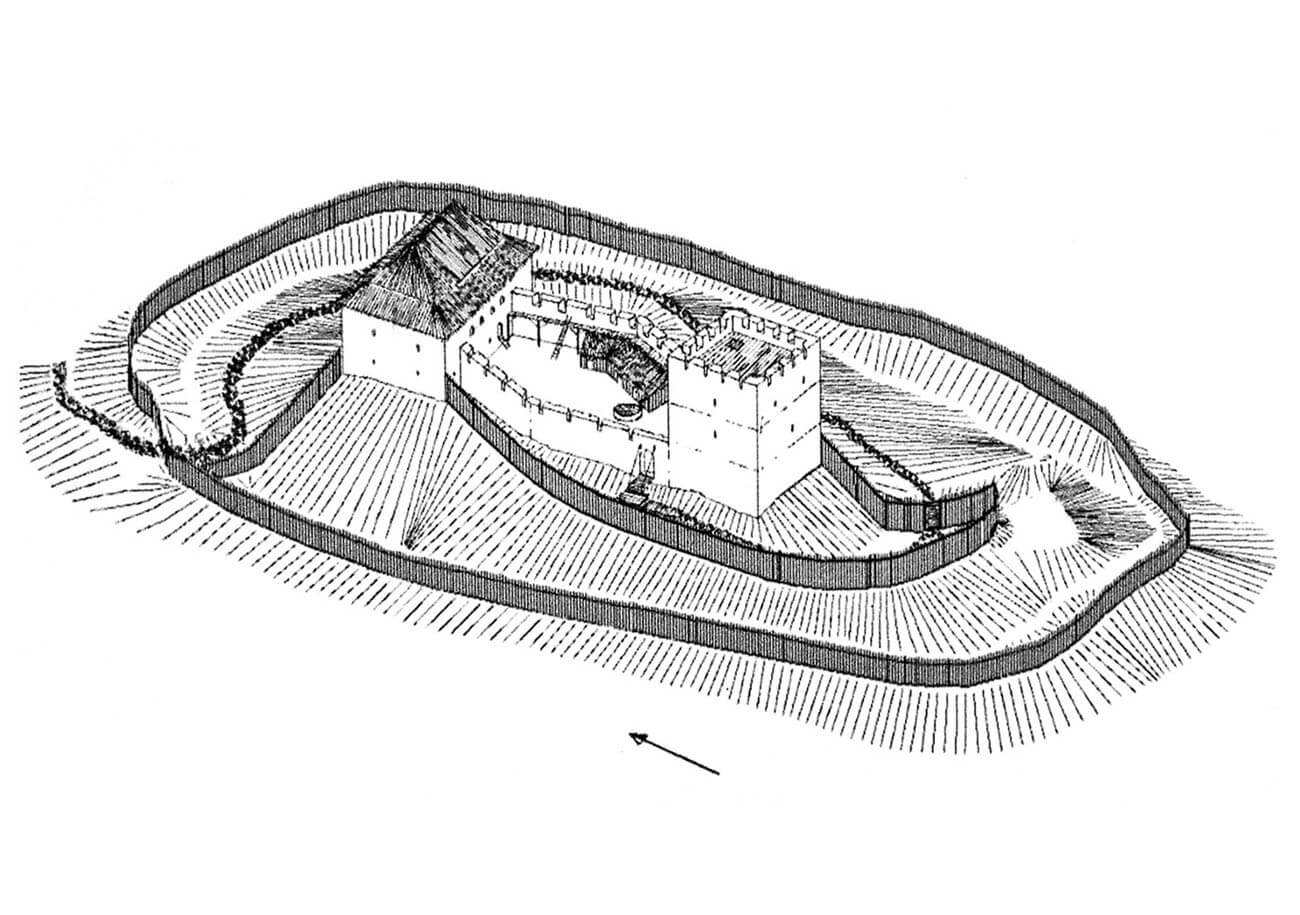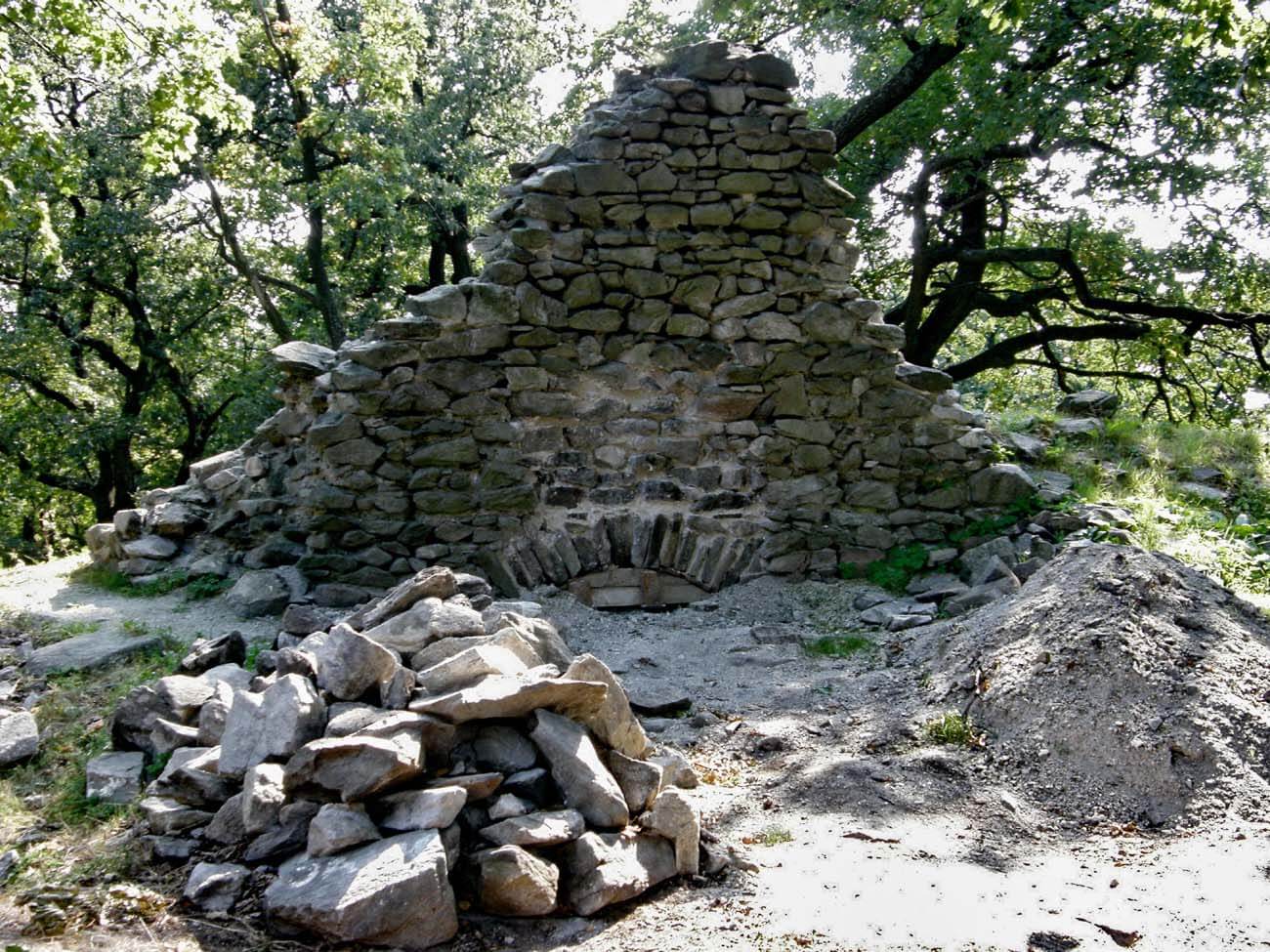History
The Black Castle (Slovak: Čierny Hrad, Hungarian: Feketevár) was most probably built on the site of old fortifications from the early Bronze Age, settled then by Slav tribes in the 9th and 10th centuries. The medieval fortress was probably built at the end of the 13th or early 14th century. The castle was built in the mountains, far from the main routes, probably due to the gold in nearby Zlatne. The strategic location of the castle also made eye contact with the castles of Gýmeš and Hrušov. The end of the stronghold’s functioning took place in the second half of the fourteenth century, although it could still be used temporarily in the sixteenth century, because in 1516 King Louis II granted to Peter and Nicholas Forgách the permission for the extraction of precious metals near the Black Castle.
Architecture
The castle consisted of a perimeter of walls about oval shape, about 90 by 60 meters, while the highest core of the castle had 39 x 17 meters. On its southern side there was a residential main tower, advanced in front of the face of the walls. Perhaps it also served as a gate tower. On the north side there was a residential house, also erected in front of the perimeter of the defensive walls which two bent curtains were quite thin, their thickness was only about 90 cm. In the middle of the courtyard was a water tank. The outer zone of defense was a moat and a eart rampart next to it, on which an outer, stone defensive wall was built.
Current state
The castle has not survived to modern times. Only humble relics of stone walls have survived. Admission to castle area is free.
bibliography:
Bóna M., Plaček M., Encyklopedie slovenských hradů, Praha 2007.
Wasielewski A., Zamki i zamczyska Słowacji, Białystok 2008.




